Teaching vascular and nonvascular plants and need some ideas to bring the WOW Factor to your classroom? Let’s explore!
There is so much diversity in plants, and they all need nutrients and water, which are essential for their survival. There are two general plant categories, vascular and nonvascular.
They both have their own special way to obtain, transport, and use nutrients and water.
In this post, I share some exciting ways to get your students excited about learning more about vascular and nonvascular plants. First, I share how you can help them become internally motivated to learn about this topic. Second, I share an engaging interactive lesson to help your students overcome the overwhelm of the topic. Third, I share ways to extend their knowledge beyond what your state standards may require.
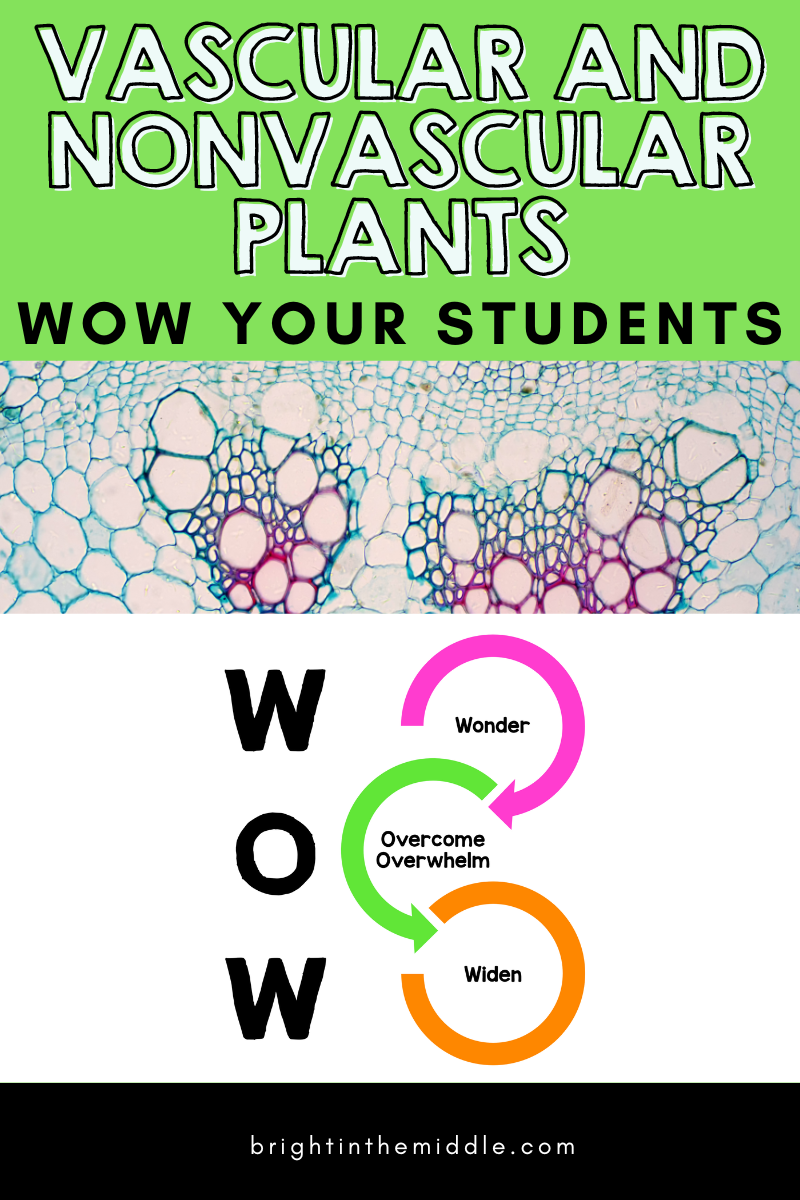
Vascular and Nonvascular Plants WONDER Strategies
WONDER strategies are those fun and engaging activities that will hook your students into a topic. Here are three that you can try out when teaching about this topic!
Observe a Slice of Marram Grass
So, there is a picture circulating on the internet, and if someone can confirm its validity, that would be great.
Nevertheless, whether it is real or not, it’s adorable and will be a great discussion-starter in your classroom about vascular and nonvascular plants.
This picture shows a thin slice of marram grass with blue-violet light on it. The result is an adorable picture that looks like there are smiling faces.
In reality, the blue smiles are made of phloem tissue. This is the structure in vascular plants that distributes food from the leaves to other parts of the plant that need it.
So, just show your students the picture, see what they think it is, and go from there!
It’s so cute and educational!
Have a Snack from a Vascular Plant
A lot of the food we eat comes from vascular plants, but not so much with nonvascular plants.
With your students, you can have a healthy snack of something like fruit! Bananas, strawberries, oranges, and apples all come from vascular plants. There are other things such as vegetables, legumes, nuts, and grains that are also provided to us by vascular plants.
Nonvascular plants provide things such as moss, seaweed, algae, and lichen, some of which are consumed, and some of which are not, but these plants just don’t have the complex structures to grow taller, and they do not have specialized organs to make the same type of things the vascular plant does.
So, have a vascular plant provided snack and start a discussion with your students!
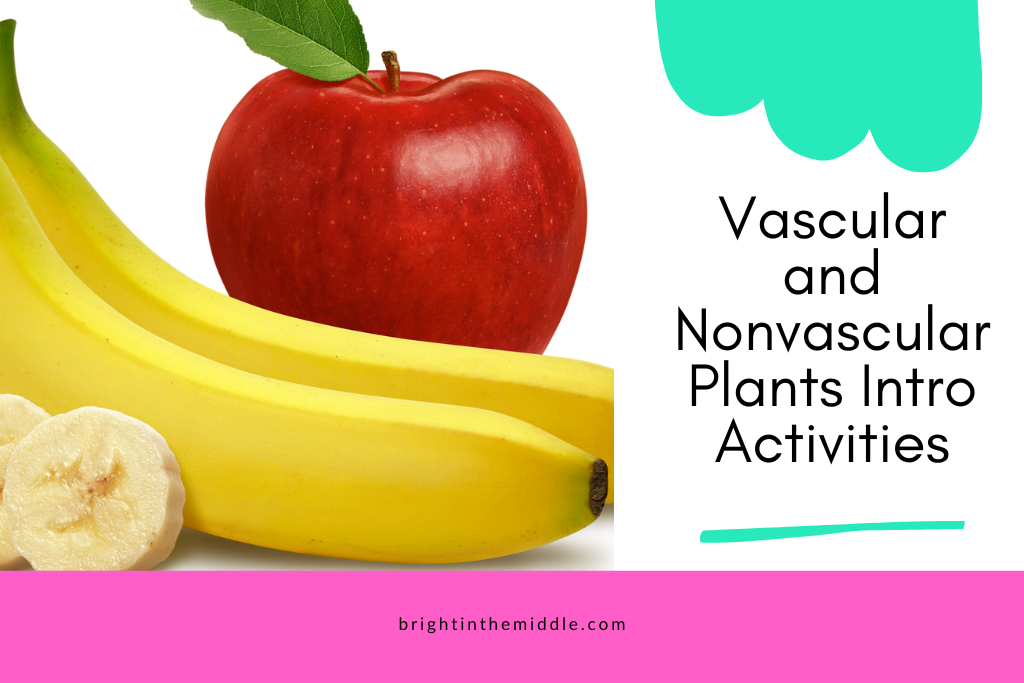
Plant Scavenger Hunt
Any chance that you get, it’s great to take your students outside. What better way to get your students excited about learning more about vascular and nonvascular plants than to take them outside to search for them.
1. At this point, your students may not know a whole lot about this topic, so you can give them a little background before taking them on this scavenger hunt.
What is the main difference between vascular and nonvascular plants? You can just tell them this little snippet of information.
- Vascular Plants – they have a well-developed, specialized structures to move food and water.
- Nonvascular Plants – simpler; do not have specialized transport structures
This will get their minds stirring and they will be curious about which plants would be which!
2. Now for the fun part… take them outside and see if they can create a list of vascular and nonvascular plants!
3. Once you are back inside, have students compare their list with their classmates. Which plants are nonvascular? Which plants are vascular?
Now, it’s time to start the lesson to see how correct their list is!
Vascular and Nonvascular Plants Interactive Lesson
Did you know that if you give too much information to your students at one time, they end up not learning anything at all?
That’s why I started creating interactive lessons! They incorporate the 7 steps to help students retain information. There are strategies including highlighting important information, segmenting content, and more! This helps reduce your students’ cognitive load and helps them to remember things better.
Interactive lessons can be used as a lesson, of course, but also makes for a great review, homework, test prep, and more!
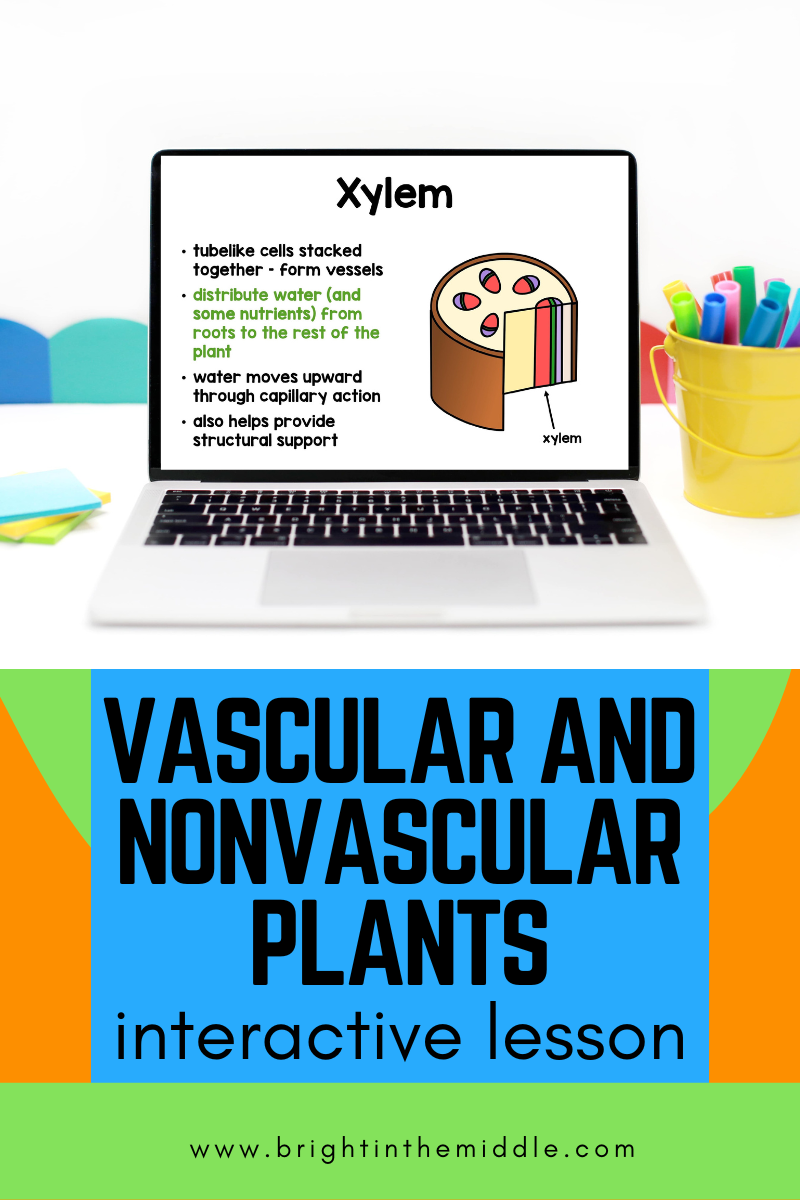
In this vascular and nonvascular plants interactive lesson, students will learn all about vascular and nonvascular plant characteristics, examples of vascular and nonvascular plants, structures such as xylem and phloem, the difference between vascular and nonvascular plants, and more!
Embedded in the lesson are activities such as an anticipation guide, Venn diagram to compare and contrast vascular and nonvascular plants, drag-and-drop activities, and more!
You can find this resource in the Bright in the Middle Shop.
You can also find this on TPT.
Vascular and Nonvascular Plants Activities to WIDEN Knowledge
Now, if you have done any of the activities above with your students, you are already having a blast! Now, it’s time to continue! Here are some fun activities to try with your students to help them apply what they’ve learned and extend their knowledge!
Make a Tree Model
We all know that vascular plants are much more complex, so creating a model of the inner parts of tree is a perfect way to allow students to visualize something they can’t normally see on a daily basis.
I love these instructions by Project Learning Tree.
In this model, students will be able to talk about the cambium, xylem, and phloem. In addition, they will learn about heartwood and outer bark.
For each model, you’ll need 1 toilet tissue tube, a ¼ inch wooden dowel rod, 34 coffee stirrers, 15 drinking straws, a piece of colored card stock paper, a rubber band, a ruler, scissors, and scotch tape!
It’s easier to show you than to explain it, so check the instruction out at the PLT website!
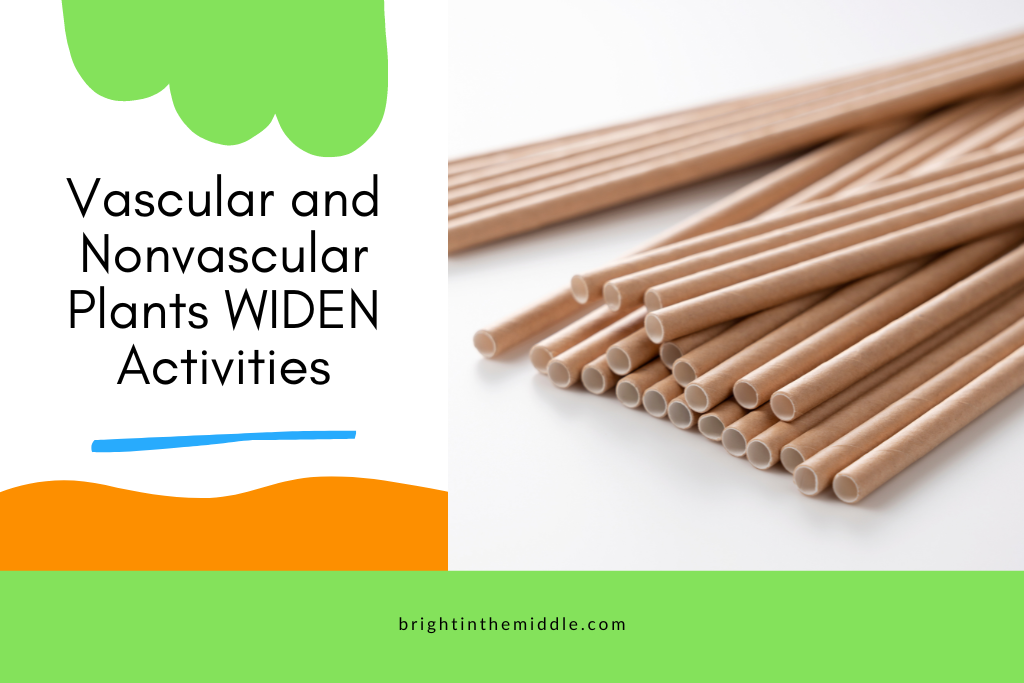
STEM – Plant Habitat
Do you really want to know if your students understand how both vascular and nonvascular plants obtain, transport, and use nutrients and water? This is the perfect activity!
- What is it? Have students create a plant habitat using “STEM materials”. Gather things such as paper, toilet paper rolls, cereal boxes, fabric, leaves, twigs, rocks, etc.
- Task students to create a habitat where either a type of vascular plant or type of nonvascular plant would survive. You can even have them to do both!
- A shoebox or another cardboard box would be created to house the habitat!
- After they create their habitat, students must be able to explain why they set it up the way they did and how these plants obtain, transport, and use nutrients and water.
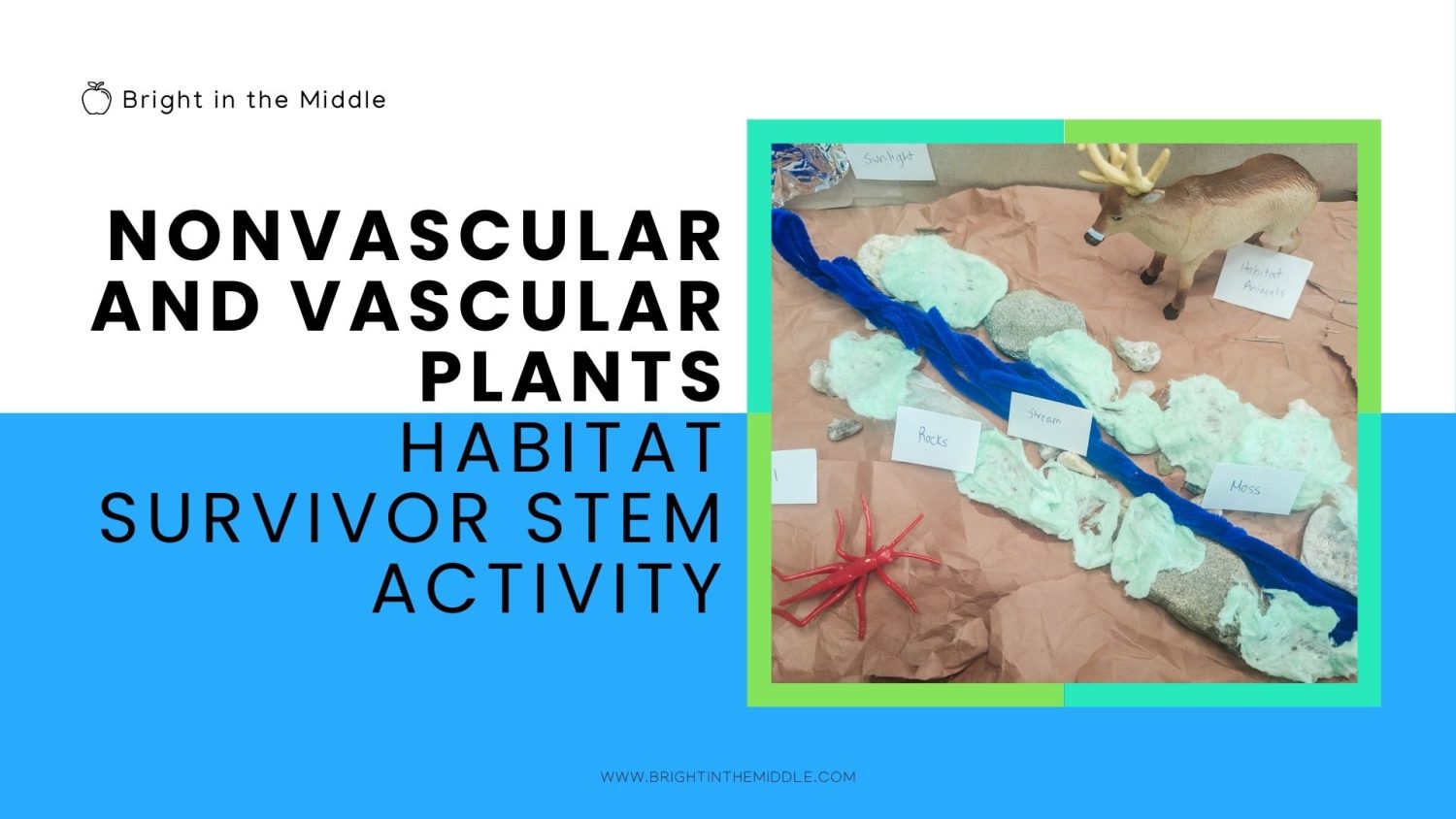
Plants RAFT
I do love a RAFT assignment! What is that? Well, it’s a writing assignment that can help students show off their creativity and content knowledge! It’s a great way to improve their scientific literacy.
RAFT stands for R: Role, A: Audience, F: Format, T: Topic.
You can have students create their own RAFT idea, or you can give them a starting point.
Here’s a fun example:
- R: Vascular Plant
- A: Nonvascular Plant
- F: Conversation
- T: The nonvascular plant is feeling down because he thinks the vascular plant is so much better. The vascular plant gives him a word of encouragement.
This is a fun way to have students dive into the content and the difference between vascular and nonvascular plants. It’s great to explain it in a different way!
Help your students master science content!



[…] Vascular and Nonvascular Plants […]